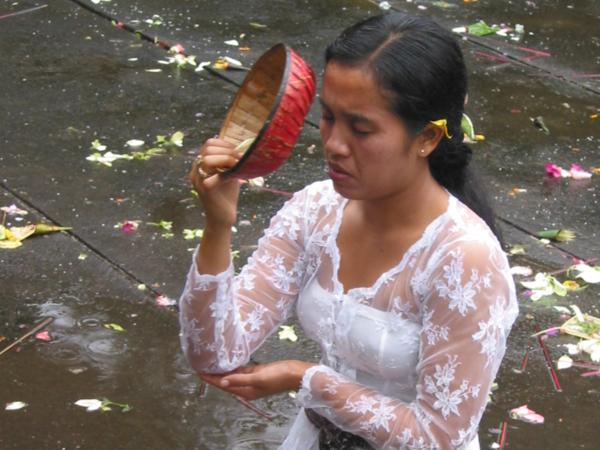

The Balinese refer to their religion as Agama Tirt -- the religion of the waters. A pilgrimage to the Pura Tirta Empul spring at Tampaksiring is an essential part of every major Balinese ceremony and ritual.
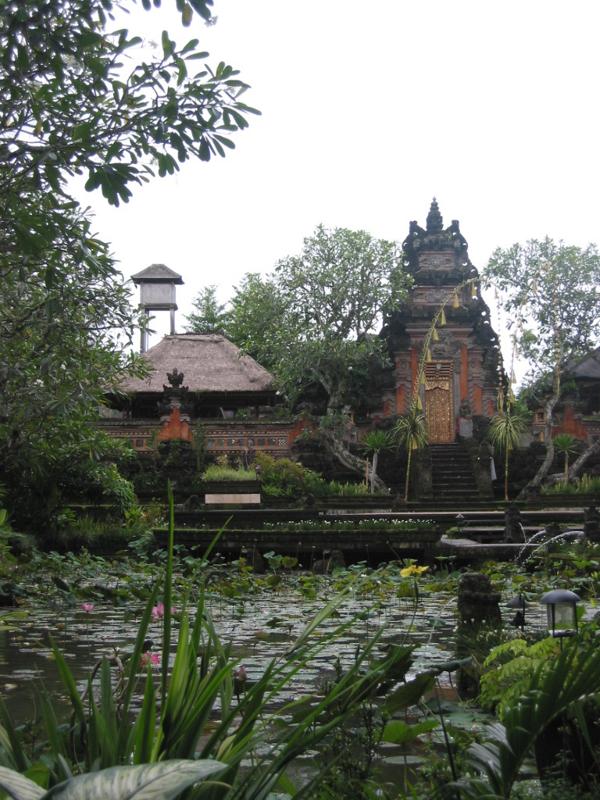
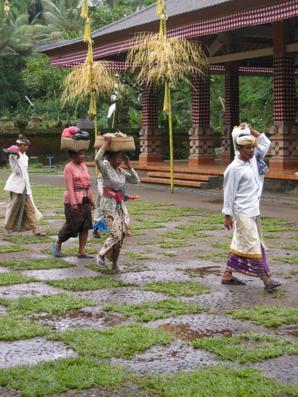
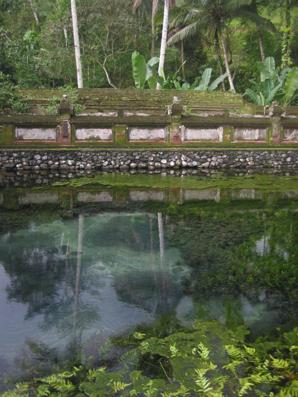
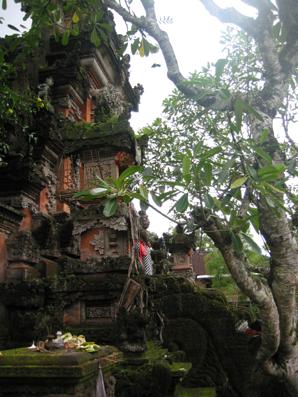
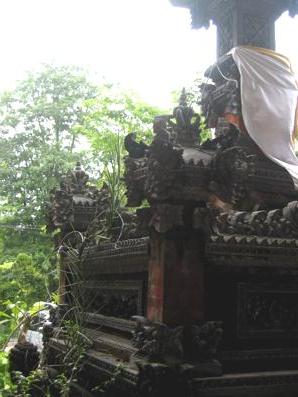
Men wear sarongs, belts and head-bands; one of the simbolic functions of the head-gear is to separate the pure thoughts from the impure ones. Here, our guide Ketut and Andreas.
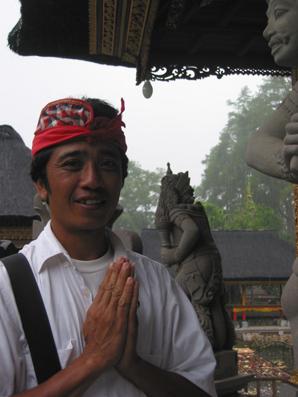
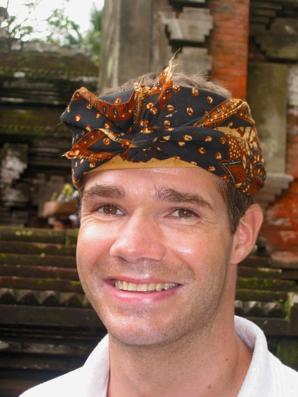
The purifying bath at the springs in Tampaksiring.
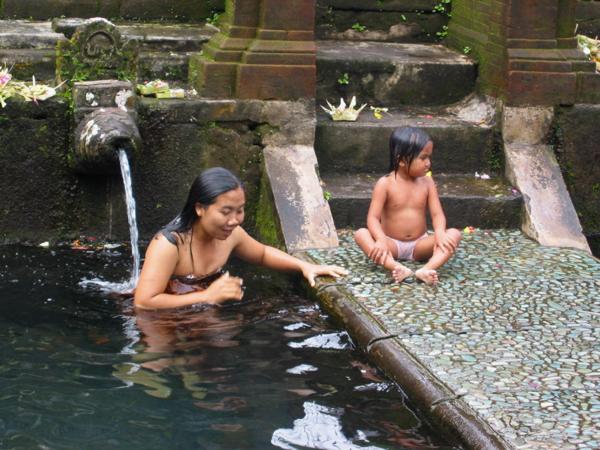
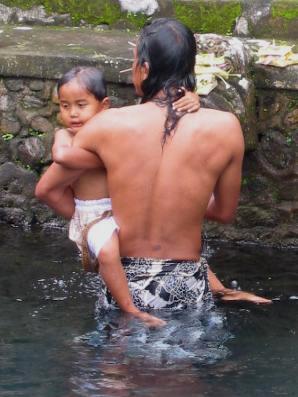

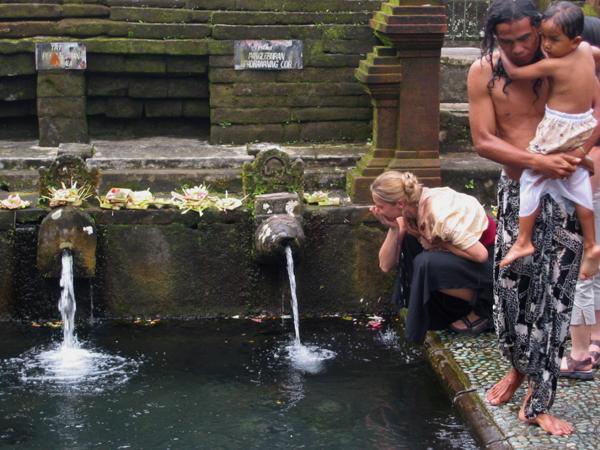
I liked this, so I adopted it from angelfire.com:
The animistic religion of the ancient Balinese arose as do most primitive religious concepts, from the need to interpret phenomena not at that time understood, and therefore regarded as supernatural. The sun, the moon, the sea, fire, water and wind, the earth, the mountains, the trees and crops and so on were endowed with magic and said to be inhabited by spirits. The spirit world was extended to inanimate concepts such as fertility and sickness and led inevitably to the deification of ancestors.
This concept was influenced by the transfer from Java of Buddhist and Hindu practices, so that the religion of Bali is now described as a Hindu-Bali one. Whilst Hindu gods and Hindu rites are in evidence, however, it seems clear that the primitive animist practices of the early Balinese have remained dominant. While Siwa, Wisnu and Brahma are accepted as the greatest of the gods, they are never present in concrete form. There are no images of the gods seen in any of the temples. When they are present in the temple they are there only in spirit, and are therefore never seen. Facilities are provided only for the spirits of the gods to rest in appropriate shrines. There are no idols and no idolatry. It is the spirits of the Hindu gods that are deified, not the gods themselves, and their spirits take their place in the temples along with the spirits of ancestors, of the mountains, of abundance, of fertility and many others. The Balinese live with their forefathers in a family union of the living and the spirits of the lead.
The Brahmanic high priests, or pedandas, whose utterances and bell-ringing ritual are derived from Hindu practice, remain apart from the common Balinese community, who have their own simple priests, the temple servants, or pemangkus, whose function is mainly to guard the temples. sweep them and keep them clean, and to preside on festive occasions.
To the Balinese, religion is closely bound up with nationality. If lie changes faith, he ceases to be a 'Balinese'. Conversely no person of another nationality, whose forefathers must inevitably belong to that nationality for all time, can be converted to the Balinese religion and become of 'Balinese' nationality. To the Balinese also, their religion represents the law, since it dictates the rules of behavior and is the basis of village life. The welfare and prosperity of the community must be ensured by religious rites designed to please and foster the spirits of righteousness, and to ensure continuing guidance and protection by ancestors. The forces of evil which cause sickness and want, and promote bestiality and vandalism, must be placated by suitable offerings, and ritual steps must be taken to keep the village free of demons and witches and other evil spirits of a troublesome nature.
These rites consist in the main of festivals held at the village temple, especially on selected holidays and on the anniversary of the temple itself. On these occasions, magnificently displayed offerings of food are taken to the temple by the women, and entertainment in the form of music, dancing and drama is provided in order to attract and encourage the ancestors of the village to remain among the people. Every day such a festival is held somewhere among the villages and it is a colorful sight in the late afternoon to see the gaily dressed women proceeding to the temple in procession, carrying the offerings on their heads and followed by the musicians and the villagers.





|
page 6 of 8
Silvija Seres, January 2004